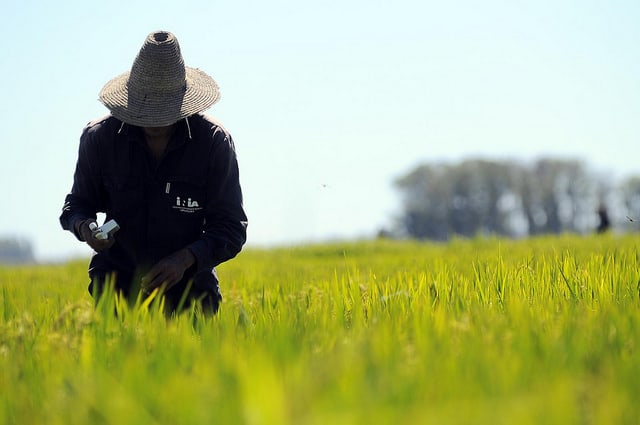A vision for the data-driven agronomy community of practice
We’re aiming to be a global leader in fostering innovation in farmer-led data-driven agronomy by 2022.

Photo by Neil Palmer
While waiting for local transportation on a Saturday, I chatted with a Colombian coffee farmer. During the conversation, he told me that he and others like him needed to eat a lot before spraying pesticide; otherwise, they’d get dizzy.
What I heard from that coffee farmer outraged me. Farmers shouldn’t get ill from doing farming.
The incident, though, happened back when I was just starting my career as an agronomist. Farmers, at the time, would use crazy amounts of pesticide and fertilizer.
I thought to myself then: “We need to help these people.”
And so today, all the data analytics that my team here at the International Center for Tropical Agriculture does would always specify the right amounts of farming inputs depending on the location. This kind of work falls under data-driven agronomy.
Data-driven agronomy refers to an approach or a set of approaches using digital technology to source, analyze and translate data into timely, practical and context-specific information so as to help farmers make the best choices for their farms.
I currently coordinate the community of practice on data-driven agronomy within the CGIAR Platform for Big Data in Agriculture. I’m pleased to share with you the vision of our community of practice, along with the strategy to realize that vision.
Our vision is that by 2022, we will be a global leader in fostering innovation in data-driven agronomy and working together to provide those involved in agriculture with rapid, maximum information based on data-driven systems.
How I imagine is that by the year 2022, farmers will be using technology, such as mobile phones, to receive targeted advisory services to make their work efficient, increase the productivity of their farms, and ensure that doing what they do would not cause any harm to their health or to the environment. This, in turn, can contribute to achieving the Sustainable Development Goals.
So how can we do that?
As I’ve always emphasized, there is no such thing as a data unicorn. Good data science is about collaboration.
As such, to realize our vision as a community of practice, people from academe, the research community, the private sector, the government and civil society need to join forces, share knowledge and do joint ventures.
One endeavor could be to map out all the actors working on data-driven agronomy and places where Internet coverage is decent. Another could be to form a working group that will focus on debunking misconceptions and developing standards around it.
You can read the full strategy here. If you have feedback on it or have more ideas on how we can achieve our community of practice’s vision, we’re happy to hear them.
Daniel Jimenez
Cali, Colombia





A very good help for small Colombian coffee growers